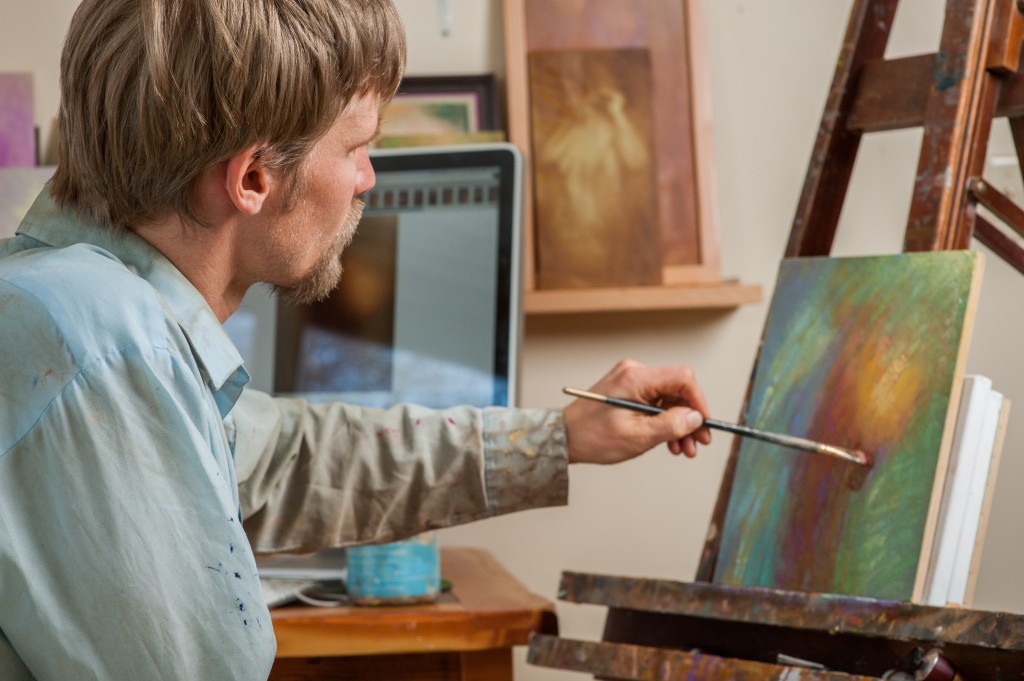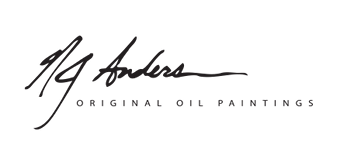Artist Statement
 My mom once told me, “Legos were a lifeline for me when you were little.” Transforming a pile of plastic pieces into a functioning toy satisfied my otherwise hyperactive and inquisitive nature. Alone, unattended, I would sit for hours, connecting piece after piece to completion of the picture on the cardboard box and then dismantle it to fulfill a vision from my own mind’s eye. I did not know it then, but building Lego spaceships modeled a larger love for the process behind all things made that would permeate adulthood. Today, I can see that everything I enjoy—from fly-fishing to cooking and playing soccer to painting—stems from a desire for seeing basic building blocks become complex harmonies.
My mom once told me, “Legos were a lifeline for me when you were little.” Transforming a pile of plastic pieces into a functioning toy satisfied my otherwise hyperactive and inquisitive nature. Alone, unattended, I would sit for hours, connecting piece after piece to completion of the picture on the cardboard box and then dismantle it to fulfill a vision from my own mind’s eye. I did not know it then, but building Lego spaceships modeled a larger love for the process behind all things made that would permeate adulthood. Today, I can see that everything I enjoy—from fly-fishing to cooking and playing soccer to painting—stems from a desire for seeing basic building blocks become complex harmonies.
Like Legos, drawing made up a significant part of my creative childhood. Not until my teens, during a high school art class, would I discover the endless possibilities in paint. Years later, in the quiet of my bedroom-turned-studio, I sit and imagine paintings into being, constructing them in my mind, layer by layer, stroke by stroke. I am constantly searching for the best and most interesting paths to create visual harmony through the understanding and handling of paint’s basic properties.
When we stand and admire a painting, we are, in the most basic sense, looking at paint—paint that has been rendered into an image. I love this potential in paint to create illusion. Painted illusion might be considered on a curve. On one end is photorealism in which the paint and artistic hand are hidden to convey extreme representation of our visual world. At the other end of the curve is abstract expressionism, which abandons representation almost entirely for the sake of individual expression. On one side, extreme control brings exclusive attention to a natural subject while on the other, spontaneity and instinct draw focus to the paint itself. I often desire to bend this curve, resulting in the junction of these two points—a tug-of-war between accuracy of form, color, space, and light in relation to our natural world and free expression of the creative mind. The stability of visual boundary, accountability, and language pulls against the vitality of personal expression, mystery and abstraction. This defines one of my favorite moments in painting—a moment where paint and image share equal focus and equal celebration. It is a moment I aspire to in my own work.
How abstract and diverse of a painted surface can one create while still retaining an image true to life? My “Reflections” series is an exploration of this question. Initially, I was drawn to a fogged mirror as a visual resource for its painterly affects on the human figure. I have since come to realize this is a perfect place to explore the tension between abstraction and representation, paint and image, surface and depth. I received a certain confirmation of my intrigue when my first fogged mirror painting was stolen from my studio! This current body of work represents studies of a new painting texture that I hope will facilitate ideas about layering and create a more interesting painting surface. I’m excited to continue working with this surface and see where I can go with it.
Thanks for taking the time to visit my site.
Nate
